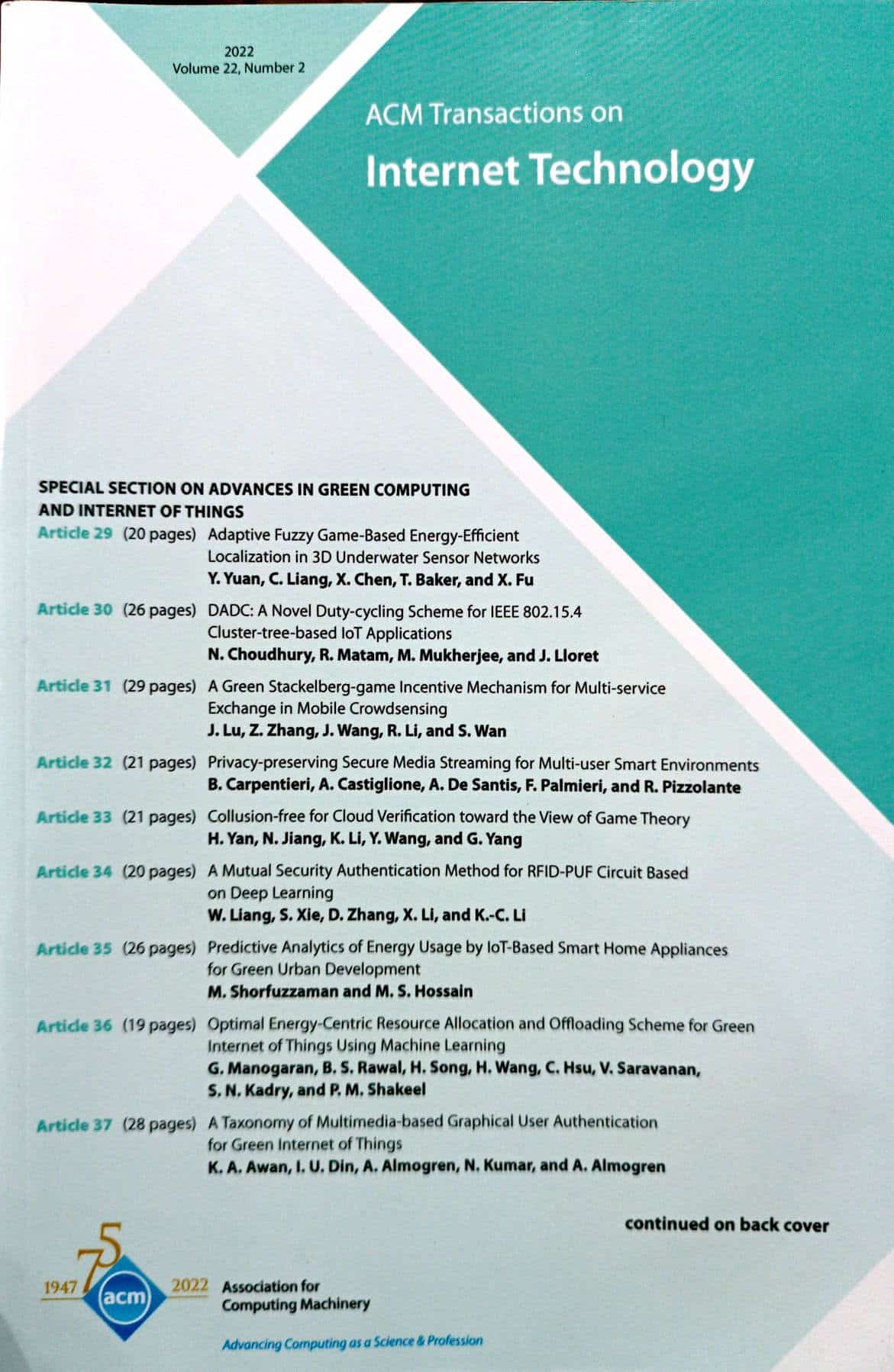Introduction to the Special Section on Edge Computing AI-IoT Integrated Energy Efficient Intelligent Transportation System for Smart Cities
IF 4.1
3区 计算机科学
Q2 COMPUTER SCIENCE, INFORMATION SYSTEMS
引用次数: 0
Abstract
Most countries around the world are trying to make the idea of “smart cities” a reality by building the basic infrastructure needed to use the technology. In this case, edge computing (EC) is very important for faster data processing and faster responses at the edges of the network. In recent years, smart cities have started using EC to improve building security, home automation, urban parking systems, and traffic and city management. Traditional IoT networks collect data and send it to a central cloud for further processing. EC devices, in contrast, can process and analyze the data themselves, as well as reduce the load on the network. In addition, mobile crowdsensing (MCS) and mobile edge computing (MEC) provide the crowdsensing services needed for a smart city in a densely populated area. These techniques provide a specific service at a specific location and for a specific period of time. However, they are better suited to support technical communication services with static edges than the human side. This leads to a dynamic extension of MEC called human-enabled edge computing (HEC), which combines people, devices, the Internet, and information with the architecture of MEC and the ability to sense MCS. In general, a traditional sensor network does not take context into account as well as HEC because it uses smart devices such as smartphones and wearables that people carry with them. It also uses data from mobile devices to obtain crowd intelligence and provide services based on what people want. Edge computing involves both people and things and therefore requires intelligent methods for classification and decision making, such as machine learning, data mining, and cognitive intelligence. Edge intelligence is used in the smart city to leverage data from different parts of the smart city. This is done by running analytics algorithms at the edge of the city. This speeds up the time it takes networked devices to make decisions and improves the quality of the data. Smart cities are taking advantage of HEC and next-generation wireless technology to connect things to people and the Internet of Things (IoT), resulting in powerful services and automation in the creation of dense and changing data sets. A successful edge computing infrastructure requires a local server, AI, and connections to computing systems in mobile devices, cars, and the Internet of Things (IoT). The research community has responded with enthusiasm. Only research articles that meet the journal’s requirements are accepted for publication after peer review. In this special issue, we have received 34 articles, and we finally include only one article, which has been fairly peerreviewed and accepted for publication. The following points highlight the remarkable scientific achievements of the accepted article.边缘计算AI-物联网智能城市综合节能智能交通系统专题介绍
世界上大多数国家都在努力通过建设使用这项技术所需的基本基础设施来实现“智能城市”的想法。在这种情况下,边缘计算(EC)对于网络边缘更快的数据处理和更快的响应非常重要。近年来,智能城市已经开始使用EC来改善建筑安全、家庭自动化、城市停车系统以及交通和城市管理。传统的物联网网络收集数据并将其发送到中央云进行进一步处理。相比之下,EC设备可以自己处理和分析数据,并减少网络负载。此外,移动众筹(MCS)和移动边缘计算(MEC)为人口稠密地区的智能城市提供了所需的众筹服务。这些技术在特定的位置和特定的时间段内提供特定的服务。然而,与人工方面相比,它们更适合支持具有静态边缘的技术通信服务。这导致了MEC的动态扩展,称为人工边缘计算(HEC),它将人、设备、互联网和信息与MEC的架构和感知MCS的能力相结合。一般来说,传统的传感器网络不像HEC那样考虑上下文,因为它使用智能手机和人们随身携带的可穿戴设备等智能设备。它还使用来自移动设备的数据来获取人群情报,并根据人们的需求提供服务。边缘计算涉及人和物,因此需要智能的分类和决策方法,如机器学习、数据挖掘和认知智能。边缘智能用于智能城市,以利用智能城市不同部分的数据。这是通过在城市边缘运行分析算法来实现的。这加快了网络设备做出决策所需的时间,并提高了数据质量。智能城市正在利用HEC和下一代无线技术将事物与人和物联网(IoT)连接起来,从而在创建密集且不断变化的数据集时提供强大的服务和自动化。一个成功的边缘计算基础设施需要本地服务器、人工智能以及与移动设备、汽车和物联网(IoT)中的计算系统的连接。研究界对此反应热烈。只有符合期刊要求的研究文章才能在同行评审后发表。在这期特刊中,我们收到了34篇文章,最后我们只收录了一篇,这篇文章经过了同行评审并被接受发表。以下几点突出了被接受的文章所取得的显著科学成就。
本文章由计算机程序翻译,如有差异,请以英文原文为准。
求助全文
约1分钟内获得全文
求助全文
来源期刊

ACM Transactions on Internet Technology
工程技术-计算机:软件工程
CiteScore
10.30
自引率
1.90%
发文量
137
审稿时长
>12 weeks
期刊介绍:
ACM Transactions on Internet Technology (TOIT) brings together many computing disciplines including computer software engineering, computer programming languages, middleware, database management, security, knowledge discovery and data mining, networking and distributed systems, communications, performance and scalability etc. TOIT will cover the results and roles of the individual disciplines and the relationshipsamong them.
 求助内容:
求助内容: 应助结果提醒方式:
应助结果提醒方式:


